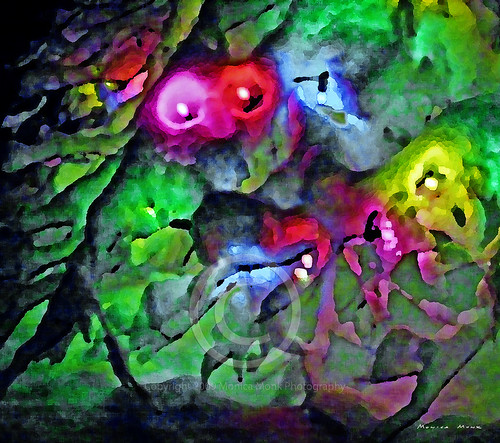Friday, January 28, 2011
Virtual identities...though not Second Life
Today I dared to teach my Adult Basic Ed students to use Elluminate at 8:30 a.m. Amazingly, for the first time since Day 1, the whole class showed up. The student most bored by everything seemed most lit up by Elluminate. :) People in the class were laughing, joking, asking questions, taking notes. In a word, I would say the feeling was...empowering, for all involved.
Sunday, November 21, 2010
Thursday, October 14, 2010
Different ways to do reading groups

The EAP 97 (level 3 Reading/Writing) students are discussing chapters of Hatchet by Gary Paulsen online this week. They have the option of discussing in the Angel discussion board or, if they prefer, of meeting in Second Life and using Voice Chat to complete the discussion questions. Now I have to figure out how to give credit for discussion questions completed in a VE--any suggestions? For now, they send me a photo of them doing the assignment.
Sunday, July 18, 2010
Friday, July 2, 2010
ISTE SIGve group photo
Here are some members of the ISTE Virtual Environments SIG Tuesday afternoon after the last presentation...ISTE (International Society for Technology in Education) Conference 2010, Denver, CO.
Wednesday, June 30, 2010
Monday, June 28, 2010
ISTE 2010:"Tranforming American Education: Learning Powered By Technology"
Many of the broader-focus presentations at ISTE this year sketch a vision of the future of the educational environment...Which in fact isn't the future but the present. The presenter this morning outlined several ways that teaching & learning have changed/are changing:
1)mobility 24/7 (more and more people carry the internet around in their pocket...Why don't we educators find ways to leverage this fact instead of simply tolerating or limiting its use because it disturbs the status quo classroom). She also brought up personal learning networks and asked the audience how many people were aware of theirs (most were). It got me to thinking that perhaps one of our community college learning outcomes should include developing an awareness of and fluency in communicating with a personal learning network. We may eventually need to conflate "information literacy" outcome with "communication".
2) Increasing amounts of digital content
3) Print materials moving to online (and on that topic, online courses are evolving into a mashup of traditional print and digital content in a virtual "classroom"--like Angel, I guess--which allows students to personalize their learning space and consume information in digital or prinShe t form according to preference.
And some important points she made:
If we want to increase the number of college graduates in this country from where it stands at the current percentage of 39%, we need to do that by implementing technology, not by making college easier!! Technology facilitates learning by making learning more accessible to more students. Technology allows accommodation of different learning styles, abilities, disabilities, lifestyles...And it gives students a myriad of ways to express themselves. It expands the borders of the classroom by connecting formal and informal learning (e.g. in a personal learning network).
And on this note, I had a thought: why are we creating separate Faculty Learning Communities at TCC for UDL and technology? At present, both of these FLC's are new as of last year and separate entities. But there is no reason why they shouldn't...In fact, they are both working toward the same goal in very similar ways!
The proposal that the presenter discussed can be found at www.ed.gov/technology.
1)mobility 24/7 (more and more people carry the internet around in their pocket...Why don't we educators find ways to leverage this fact instead of simply tolerating or limiting its use because it disturbs the status quo classroom). She also brought up personal learning networks and asked the audience how many people were aware of theirs (most were). It got me to thinking that perhaps one of our community college learning outcomes should include developing an awareness of and fluency in communicating with a personal learning network. We may eventually need to conflate "information literacy" outcome with "communication".
2) Increasing amounts of digital content
3) Print materials moving to online (and on that topic, online courses are evolving into a mashup of traditional print and digital content in a virtual "classroom"--like Angel, I guess--which allows students to personalize their learning space and consume information in digital or prinShe t form according to preference.
And some important points she made:
If we want to increase the number of college graduates in this country from where it stands at the current percentage of 39%, we need to do that by implementing technology, not by making college easier!! Technology facilitates learning by making learning more accessible to more students. Technology allows accommodation of different learning styles, abilities, disabilities, lifestyles...And it gives students a myriad of ways to express themselves. It expands the borders of the classroom by connecting formal and informal learning (e.g. in a personal learning network).
And on this note, I had a thought: why are we creating separate Faculty Learning Communities at TCC for UDL and technology? At present, both of these FLC's are new as of last year and separate entities. But there is no reason why they shouldn't...In fact, they are both working toward the same goal in very similar ways!
The proposal that the presenter discussed can be found at www.ed.gov/technology.
Subscribe to:
Posts (Atom)


